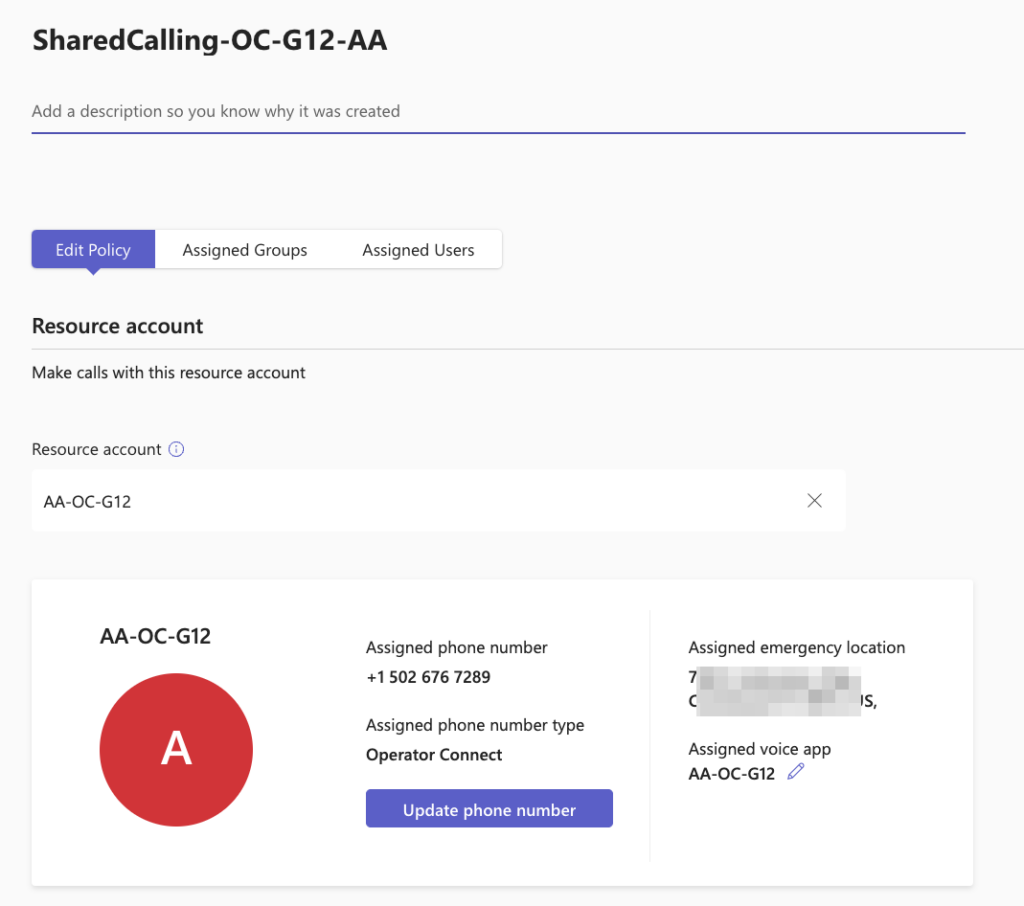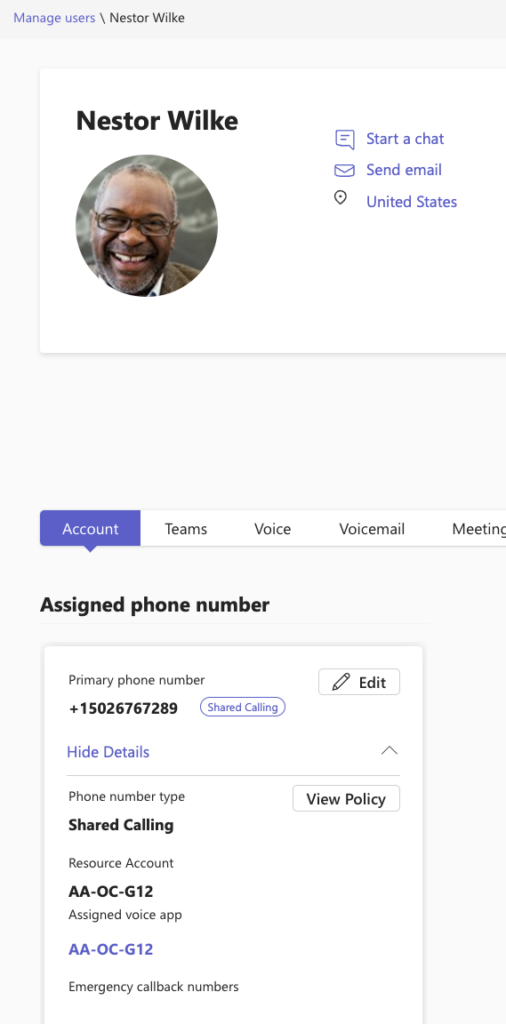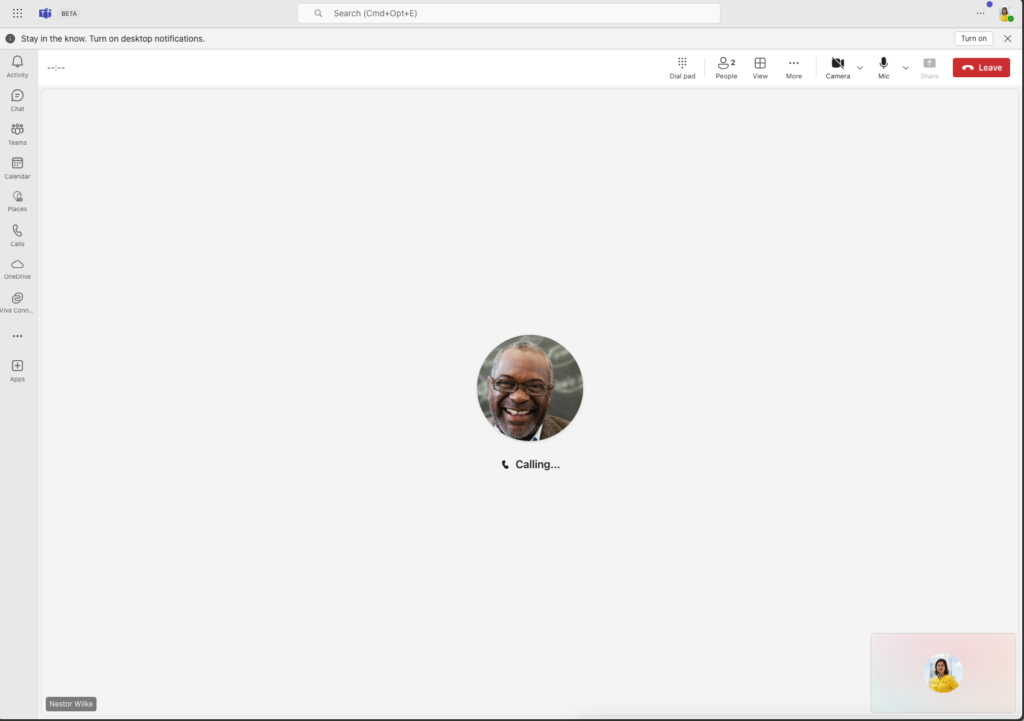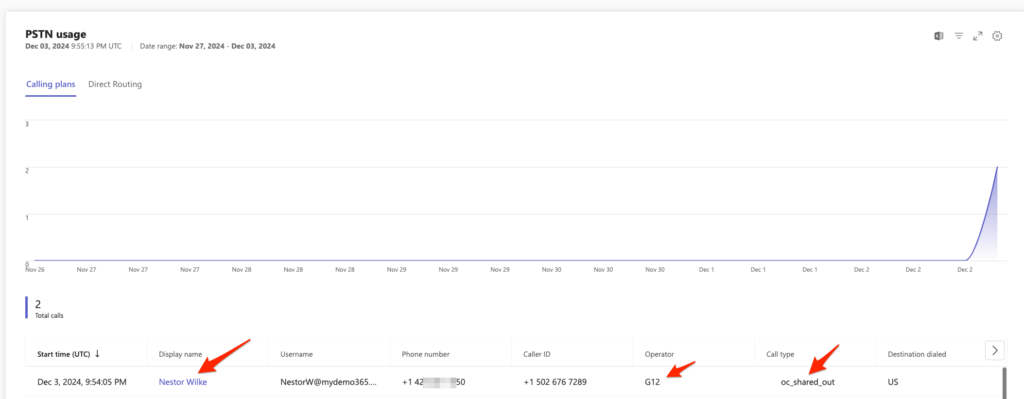Hello! Me again! It’s been a minute since I’ve come up for air. You may recall I’ve written extensively on Teams Phone Shared Calling powered by 1P Calling Plans, Operator Connect, and even Direct Routing. One super exciting new enhancement went live not too long ago – Extension Dialing Support!
Until recently, the premise of Shared Calling was to enable end-users (or end-shared-devices) with PSTN calling capabilities without the need of an assigned phone number. In other words – their Phone Number (or LineURI) was empty / blank / null. This was by design either as an end-state for certain types of users or as a transitionary-state to quickly accelerate deployment of Teams Phone while more traditional site-by-site or team-by-team phone numbers were evaluated and assigned.
But, what about those cases where users didn’t need DID/DDI, but, companies wanted to use E.164 extension (like x1001 for Bob, x1002 for Jerry, x1003 for Sue, x1004 for Conference Room A, etc.). There wasn’t a use case to allow for both extension dialing AND Shared Calling until now. Rather than a full reprise of Shared Calling enablement, let’s skip straight to the new stuff – Step 10!
Step 10 – Configure Extension Dialing Support (Optional)
Let’s make the assumption that you already have Shared Calling enabled. You now have this new ability – and it’s optional – to configure extension dialing support for some/many/any/all of your end-users that have a Shared Calling policy!
In our case, let’s consider our Operator Connect powered Shared Calling Policy called “SharedCalling-OC-G12-AA” which is with the Momentum/G12 and powered with an Auto Attendant. In other words, a very standard Shared Calling Policy with an AA-based Resource Account.

What users are assigned this policy? Well, in this case, let’s filter and find out:

Right. Nestor. Let’s look at Nestor’s configuration.

Perfect. What I want to do is give Nestor an extension. I’ll use the base # of the Shared Calling policy (+15026767289) and just for ease of demo, I’ll use extension 1001 for Nestor.

Wait. Daryl. You’re using “Direct Routing” number here and I know you told me this Shared Calling policy was powered by Operator Connect. Is that right? Yup. That’s right. This is potentially confusing. The only way to assign an “extension” is to do that as a Direct Routing based number – either via TAC (like I’m doing) or via PowerShell. That’s okay. It does *not* mean the Shared Calling policy needs a Resource Account with a Direct Routing number. This works perfect no matter how the Shared Calling policies resource account is PSTN enabled – Calling Plan, Operator Connect, Direct Routing. All are the same. This is a unique quality and enablement configuration for an extension-based phone number. Just do it.
Of note though and found in the Step 10 link above. The voice routing policy assigned to the Shared Calling user – Nestor in this example – must NOT contain PSTN usages. That’s still an important callout.

Let’s look at Nestor’s configuration now.

Notice the primary phone number now shows this new extension. The Shared Calling policy is still assigned! But, the TAC configuration shows the user-based number now vs. the Shared Calling number. This is correct. This is by design.
Let’s take time build a simple dial plan with a normalization rule for this.

and I’ll test it

Looks good! And let’s assign that to – oh – how about Patti

Prove It Works
Great. Let’s prove this all works as expected. No tricks here!
I’ll take time to login to Teams as Patti and let’s see what happens when I dial 1001.

Looky there! It knows! Reverse Number Lookup (RNL) properly translated +15026767289;ext=1001 to Nestor.

Let’s make the call. Below will be some unannotated screen shots showing both Patti and Nestor Team Clients and call history. No shenanigans. It’s all working as expected.




and then, just for posterity, I’ll have Nestor call me on my work number so I can check the outbound PSTN calling to make sure Shared Calling is working as expected.

Yup, that’s the expected CLID – the base # and the Shared Calling #! And let’s look at the PSTN Usage Report to make sure it’s all normal.

Yup. There’s Nestor. It’s G12. And it’s “oc_shared_out” which is the mechanism to show that it’s considered a Shared Calling policy powered PSTN call. All is well!
That’s that. You can go back to my many posts on Shared Calling to review the full details, today was just to talk through this new (optional) Step 10 – using extension dialing with Shared Calling! Be well friends!